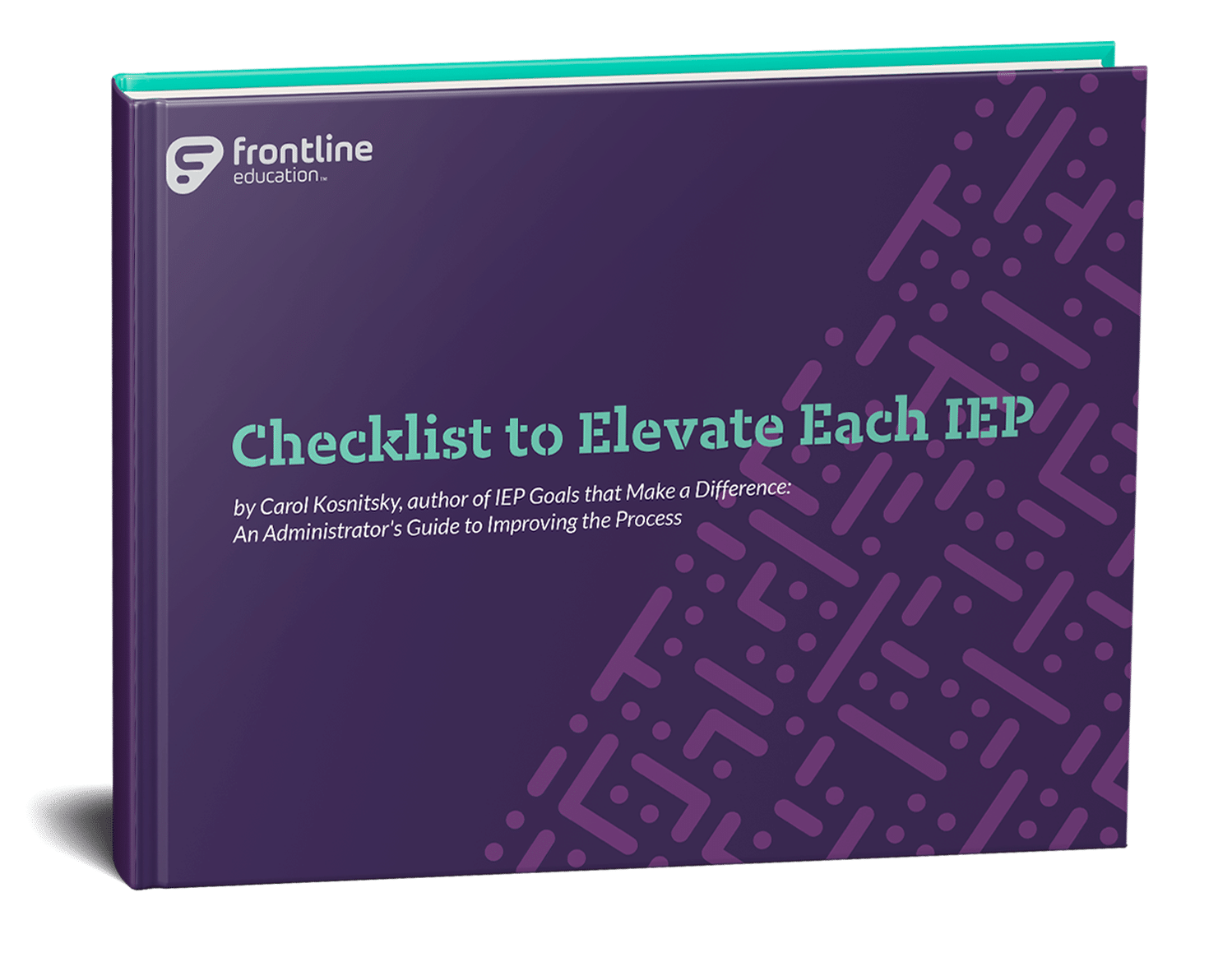Checklist to Elevate Each IEP
6 best practices to help create compliant, individualized and relevant IEPs

With over 7 million students enrolled in special education programs in the U.S., 47 states feeling the effects of a special education teacher shortage, and up to 50% of special educator time spent on paperwork — how can schools ensure Individualized Education Programs (IEPs) are high-quality, compliant and actionable for educators working with students with disabilities?
The answer: by providing easy-to-digest professional development for special education teachers and providers.
Equipping your special educators with expert IEP best practice tips helps novice and veteran educators build and implement multi-dimensional IEPs that enable a student to make appropriate progress.
This IEP Checklist, based on advice from special education expert Carol Kosnitsky, outlines best practices and how they help ensure a Free Appropriate Public Education (FAPE) is provided to each student.
Our IEP Checklist outlines best practices and how they help ensure FAPE is provided for each student.
Special educators will get a refresher on how to:
-
Use multiple sources of data to build a comprehensive IEP
-
Focus on student strengths, interests and preferences
-
Increase parent participation in the IEP process
-
Describe how the student’s disability affects involvement and progress in the general education curriculum
-
Write specific statements on academic and functional needs
-
Establish baseline data to take a student’s performance temperature
About the Author
Carol Kosnitsky
Carol is a renowned author, consultant and national speaker on best practices in developing measurable and compliant goals and objectives. As a former Special Education Director, Supervisor and Teacher who has consulted with hundreds of school districts, she brings a great depth of practical experience and compassion to her work along with energy, insights, vision and systemic thinking. Funny and articulate, Carol inspires and informs.
